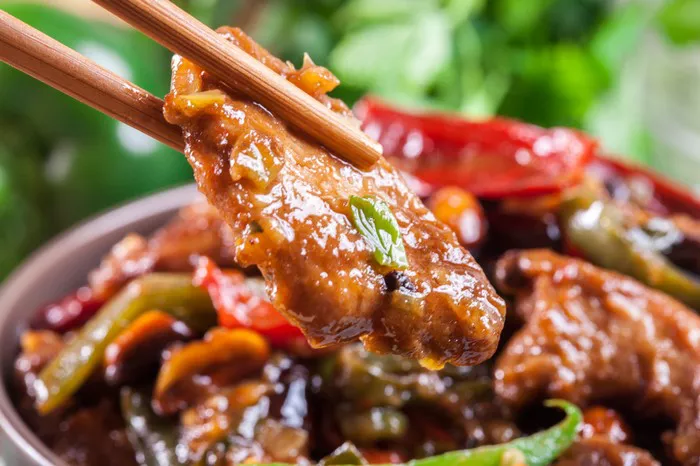Chinese cuisine is celebrated worldwide for its melt-in-your-mouth, tender meat dishes that leave diners craving for more. From succulent Kung Pao Chicken to velvety Char Siu, the secret behind the impeccable tenderness of meat in Chinese restaurants lies in a combination of age-old techniques and meticulous attention to detail. In this article, we delve into the methods employed by Chinese chefs to achieve such remarkable results, from marinades to cutting techniques, cooking methods, and practical tips for home cooks.
Marinades: Breaking Down Barriers to Tenderness
Marinades play a crucial role in Chinese cooking, not only infusing meat with flavor but also tenderizing it by breaking down tough muscle fibers. Common marinade ingredients include soy sauce, rice wine, cornstarch, baking soda, and egg whites, each serving a specific function in the tenderizing process.
Soy sauce, a staple in Chinese cuisine, contains enzymes that help break down proteins, while also imparting a savory depth of flavor. Rice wine acts as a tenderizer and also adds a subtle sweetness to the meat. Cornstarch helps create a protective coating on the surface of the meat, sealing in moisture and preventing it from becoming tough during cooking. Baking soda, with its alkaline properties, helps to further tenderize the meat by altering its pH level. Finally, egg whites not only bind the marinade together but also contribute to a silky texture and help the marinade adhere to the meat.
By allowing meat to marinate for an extended period, typically several hours or overnight, these ingredients work together to break down tough fibers, resulting in exceptionally tender and flavorful meat.
Velveting: The Key to Silky Smooth Texture
Another technique widely employed in Chinese cooking to achieve tender meat is velveting. This method involves coating thinly sliced meat in a mixture of cornstarch and egg white before cooking. The cornstarch forms a protective barrier around the meat, sealing in moisture and preventing it from overcooking. Meanwhile, the egg white helps the cornstarch adhere to the meat, creating a velvety texture when cooked.
Velveting is particularly effective for delicate meats such as chicken, pork, and shrimp, ensuring they remain tender and juicy even when exposed to high heat during stir-frying or deep-frying.
Cutting Techniques: Slicing Against the Grain
Proper cutting techniques are paramount in Chinese cuisine to ensure meat is tender and easy to chew. Slicing meat against the grain, or perpendicular to the direction of the muscle fibers, shortens the fibers and reduces the chewiness of the meat.
By slicing against the grain, chefs create shorter muscle fibers, making it easier for the teeth to break down the meat and resulting in a more tender texture. This technique is especially crucial for tougher cuts of meat, such as beef or pork, commonly used in Chinese dishes.
Cooking Methods: Harnessing Heat for Tenderness
Chinese cooking employs a variety of cooking methods, each carefully chosen to preserve the tenderness of the meat. Stir-frying, for example, involves cooking meat quickly over high heat, ensuring it remains tender while developing a flavorful char on the exterior.
Braising is another common technique used to tenderize tougher cuts of meat. By cooking meat slowly in a flavorful liquid, such as soy sauce, broth, or wine, connective tissues break down, resulting in tender and succulent meat.
Specific Examples: Tantalizing Tender Meat Dishes
Numerous Chinese dishes are renowned for their incredibly tender meat, showcasing the mastery of these tenderizing techniques. Kung Pao Chicken, for instance, features velvety chicken breast stir-fried with peanuts, peppers, and a savory-sweet sauce. The chicken, coated in a cornstarch and egg white mixture, remains tender and juicy amidst the bold flavors of the dish.
Mongolian Beef, another beloved classic, highlights thinly sliced beef marinated in a savory sauce and quickly stir-fried with scallions and garlic. The tender beef, sliced against the grain and cooked over high heat, retains its melt-in-your-mouth texture, making it a perennial favorite.
Char Siu, or Chinese BBQ pork, showcases the art of velveting, with pork loin marinated in a sweet and savory sauce before being roasted to perfection. The result is succulent, caramelized pork with a tantalizingly tender texture.
Tips for Home Cooks: Bringing Chinese Mastery to Your Kitchen
For home cooks looking to replicate the tender meat dishes found in Chinese restaurants, several tips can help achieve professional-level results. Invest in high-quality ingredients such as soy sauce, rice wine, and cornstarch, as they play a crucial role in both flavor and tenderness.
When marinating meat, allow it to sit for at least a few hours or preferably overnight to ensure optimal flavor and tenderness. Additionally, pay attention to proper cutting techniques, slicing meat against the grain to maximize tenderness.
Experiment with different cooking methods, from stir-frying to braising, to discover which best suits the meat you’re preparing. And don’t forget the importance of velveting for delicate cuts of meat, ensuring they remain tender and succulent throughout the cooking process.
Conclusion
With these techniques and tips, home cooks can unlock the secrets of tender meat found in Chinese cuisine and elevate their cooking to new heights of flavor and texture. Whether preparing a simple stir-fry or a complex braised dish, mastering these techniques will undoubtedly impress family and friends alike with the irresistibly tender results.






















